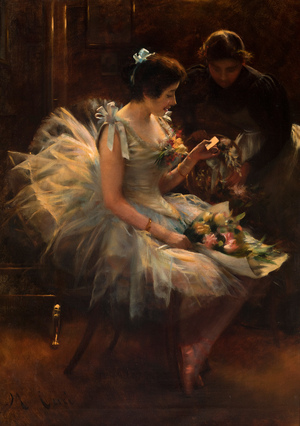Manel Cusí: the sublimated beauty of ballet
Since ancient times, dance has fascinated writers, intellectuals and artists who, inspired by the beauty of this discipline, have made it the protagonist of their works.
In fact, if we think of the figure of the ballerina in relation to the Fine Arts, it is very likely that the iconic representations of Edgar Degas immediately come to mind. However, the relationship between balé and art has a long tradition that reaches far beyond the impressionist master.
In this sense, art has become a graphic testimony of the dances of past cultures and eras, reflecting some of the challenges and concerns that artists have faced in overcoming the barriers between the two disciplines.
Thus, the expressive and fleeting nature of movement became a motif of representation for artists such as Degas, Rodin, Renoir and Matisse, who found in this art the greatest expression of their desire to capture the plasticity contained in the human body.
However, the multiple possibilities offered by this theme are not limited to purely plastic aspects, but also reflect the desire to immortalize the ritual that surrounds the practice of ballet, portraying the atmosphere of schools and theaters, as well as the professionalism, sacrifice, elegance and sensitivity that surrounds the art of dance.
Within the national nineteenth-century painting, many great artists were moved, in part, by the great acceptance that reached among the bourgeoisie of the time, dedicated part of their production to this theme. As one of the most brilliant chroniclers of 19th century Catalonia, Manel Cusí transferred the refinement of bourgeois society to his work through representations of a gallant character dominated by the absolute prominence of women. Among them, the figure of the dancer will become vitally important both for the technical possibilities it offers and for the aesthetic connotations that emerge from it.

The typology of the dancer that Cusí will give birth to, far from having Degas as a reference, keeps a close link with that of the French painter Pierre Carrier Belleuse, coinciding with the latter in the same aesthetic purposes based on the exaltation of feminine beauty. Unlike Degas, for Cusí the concern for capturing the movement of the dancers and the ephemeral gesture was never one of his main objectives, preferring to represent them in static positions that allowed him to work with intensity on the figure. As can be seen in this case, Cusí gave special importance to the handling of light, being one of the pioneers in working with electric light, contrary to the artists who worked with “plen air”. Likewise, the work centered on the moment in which the dancer, after her performance, receives an exuberant bouquet in her dressing room, allows the artist to recreate the play of light, as well as the veiling of the tulle and the soft flesh tones of the dancer’s face.
As the title of the book dedicated to the artist underlines, Manuel Cusí’s devotion to beauty became the leitmotiv of his entire career, capturing like few others the ideal of feminine beauty that, at that time, dominated artistic practice.






